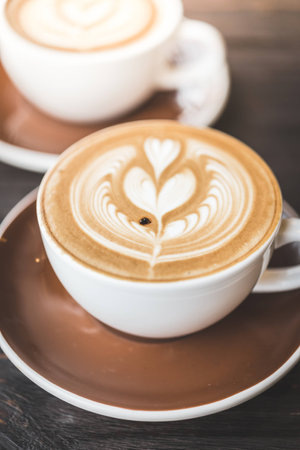1. Choosing the Right Coffee Beans
If you want to brew the perfect cup of French Press coffee, it all starts with choosing the right coffee beans. The quality, roast level, and origin of your beans play a huge role in how your final cup will taste. Let’s break down what to look for when picking out your beans.
Freshness Matters
Always go for freshly roasted coffee. Coffee starts to lose its flavor shortly after roasting, so try to use beans within 2-4 weeks of their roast date. Many local roasters in the U.S. print the roast date directly on the bag—look for that instead of an expiration date. Buying whole beans and grinding them just before brewing will also help preserve those rich aromas and flavors that make French Press coffee so special.
Choosing the Right Roast Level
The roast level you choose will affect both the flavor and body of your brew. Heres a quick guide to help you pick:
| Roast Level | Flavor Profile | Best For |
|---|---|---|
| Light Roast | Bright, acidic, fruity notes | Coffee drinkers who enjoy delicate flavors and complex aromas |
| Medium Roast | Smooth, balanced, with hints of chocolate or nuts | A great middle ground for most French Press lovers |
| Dark Roast | Bitter-sweet, bold, smoky flavors | If you prefer a strong, full-bodied cup with less acidity |
The Impact of Origin
Coffee is grown in regions all over the world, and each origin brings unique characteristics to your cup. Here are some popular origins and what you can expect:
| Origin | Tasting Notes |
|---|---|
| Ethiopia | Citrus, floral, berry-like flavors—great for light roasts |
| Colombia | Nuts, caramel, medium body—very versatile for French Press |
| Brazil | Smooth, chocolaty, low acidity—ideal for darker roasts |
| Sumatra | Earthy, herbal, full-bodied—perfect if you like bold flavor |
Avoid Pre-Ground Coffee (If You Can)
If possible, skip the pre-ground coffee sold at grocery stores. These tend to be less fresh and often ground too fine for French Press brewing. Instead, invest in a good burr grinder and grind your beans coarsely right before brewing. That way, you’ll get more control over flavor and avoid bitterness caused by over-extraction.
Your Bean Checklist:
- Date Roasted: Within 2–4 weeks is best.
- Whole Bean: Always better than pre-ground.
- Burr Grinder: For consistent coarse grind size.
- Taste Preference: Match roast level and origin to your preferred flavor profile.
2. Grinding Coffee for French Press
When it comes to brewing with a French Press, getting the grind size right is just as important as choosing the right beans. The French Press method relies on immersion brewing, which means your coffee grounds sit in hot water for several minutes. Because of this, you need a coarse and consistent grind to get the best flavor without over-extraction or bitterness.
Why Coarse Grind Matters
A coarse grind looks similar to sea salt. If your coffee grounds are too fine—like what youd use for espresso—they can slip through the metal mesh filter of your French Press. This not only leads to a gritty cup but also causes over-extraction, making your coffee taste harsh or bitter. A coarse grind keeps the particles large enough to stay behind when you press down the plunger, giving you a smooth and clean cup.
Consistency Is Key
Even grind size ensures that all your coffee extracts at the same rate. Uneven grinds mean some bits will over-extract while others under-extract, leading to an unbalanced brew. That’s why consistency is crucial—every particle should be roughly the same size for optimal flavor.
The Best Tool: Burr Grinder vs Blade Grinder
If youre serious about great French Press coffee, investing in a burr grinder is worth it. Unlike blade grinders that chop unevenly, burr grinders crush beans between two abrasive surfaces, resulting in a uniform grind every time.
| Grinder Type | Grind Consistency | Best For |
|---|---|---|
| Burr Grinder | Very consistent | French Press, Pour Over, Espresso |
| Blade Grinder | Inconsistent | Drip Coffee (with some compromise) |
Pro Tip:
If youre using a burr grinder at home, set it to the coarsest setting first and adjust slightly finer if needed based on taste. You’re looking for a texture close to breadcrumbs or kosher salt—not powdery like flour.
Troubleshooting Your Grind
- Coffee tastes too bitter?
Your grind may be too fine. Try going coarser. - Coffee tastes weak or sour?
Your grind might be too coarse or your brewing time too short. - Sediment in your cup?
Check that your grind isn’t too fine and that your filter is properly seated.
Nailing the right grind is one of the simplest ways to level up your French Press game—and once you get it right, youll taste the difference in every cup.

3. Mastering the Brew Ratio
One of the key steps to making a delicious French Press coffee is getting your coffee-to-water ratio just right. This simple balance can make or break the flavor of your brew. Whether you like it bold and strong or smooth and mellow, knowing how to adjust your ratio will help you make your perfect cup every time.
What Is the Ideal Coffee-to-Water Ratio?
A great starting point for most people is a 1:15 ratio — thats 1 gram of coffee for every 15 grams (or milliliters) of water. This gives you a balanced cup with rich flavor and smooth body. But feel free to tweak it to match your personal taste.
Common Ratios Based on Strength Preference
| Coffee Strength | Coffee-to-Water Ratio |
|---|---|
| Mild | 1:17 |
| Balanced | 1:15 |
| Strong | 1:12 |
How Much Coffee Should You Use?
The amount of coffee and water youll need also depends on the size of your French Press. Here’s a quick guide to help you measure out the right amount based on standard press sizes:
French Press Size Guide
| French Press Size | Coffee (grams) | Water (ml) |
|---|---|---|
| 12 oz (350 ml) | 23 g | 350 ml |
| 17 oz (500 ml) | 33 g | 500 ml |
| 34 oz (1000 ml) | 66 g | 1000 ml |
Tweaking for Taste
If your coffee tastes too bitter or strong, try using a little less coffee or more water next time. On the flip side, if it feels weak or watery, add more grounds or reduce the water slightly. Remember, small adjustments go a long way, so tweak slowly until you hit that sweet spot.
A Quick Tip:
If youre using tablespoons instead of a scale, keep in mind that one level tablespoon of coarsely ground coffee is roughly 5-7 grams depending on the grind size and bean type. For best results, investing in a kitchen scale will give you more consistency with each brew.
4. The French Press Brewing Process
Brewing a great cup of French press coffee doesn’t need to be complicated. With the right steps, you can bring out the rich, full-bodied flavor that makes French press so special. Follow this simple step-by-step guide to get the best results every time.
Step 1: Measure Your Coffee and Water
The ideal coffee-to-water ratio is key to a balanced brew. A common recommendation is 1:15—meaning for every 1 gram of coffee, use 15 grams (or milliliters) of water.
| Coffee (grams) | Water (ml) | Servings |
|---|---|---|
| 20g | 300ml | 1 cup |
| 40g | 600ml | 2 cups |
| 60g | 900ml | 3 cups |
| 80g | 1200ml | 4 cups |
Step 2: Heat Your Water
The sweet spot for French press brewing is between 195°F and 205°F (90°C – 96°C). If you don’t have a thermometer, just bring your water to a boil and let it sit for about 30 seconds before pouring.
Step 3: Add Coffee Grounds to the French Press
Add your coarsely ground coffee into the bottom of your French press. A coarse grind helps avoid over-extraction and keeps grounds from slipping through the filter.
Step 4: Bloom Time – First Pour
Start by pouring just enough hot water to saturate all the grounds—about twice the amount of coffee youre using. For example, if you used 30g of coffee, pour in about 60ml of water. Let it sit for 30–45 seconds. This process is called “blooming” and allows gases to escape, improving flavor extraction.
Step 5: Pour the Remaining Water and Stir
After blooming, slowly pour in the rest of your hot water. Once filled, give it a gentle stir with a wooden or plastic spoon to make sure all grounds are evenly saturated.
Step 6: Steep for Optimal Flavor
Place the lid on your French press with the plunger pulled all the way up. Let your coffee steep undisturbed for 4 minutes. This is where the magic happens—flavors develop and oils are extracted during this time.
Step 7: Plunge Slowly and Serve
After steeping, gently press down the plunger with steady pressure. Don’t rush—it should take about 15-20 seconds to reach the bottom. Pour immediately into your mug or carafe to prevent over-extraction and bitterness.
Troubleshooting Tip:
If plunging feels too easy or too hard, your grind size might be off. Too easy? Try a slightly finer grind next time. Too hard? Go a bit coarser.
Your Perfect Cup Awaits!
This simple process highlights what makes French press coffee so beloved—rich texture, bold flavor, and total control over every detail.
5. Tips for Serving and Enjoying
Now that youve brewed the perfect cup of French Press coffee, its time to savor it the right way. Serving and enjoying your coffee can make a big difference in how it tastes and feels. Here are some expert tips to help you elevate your coffee experience.
Choose the Right Mug or Cup
The vessel you use matters more than you might think. A thick ceramic mug helps retain heat longer, while a glass mug lets you enjoy the rich color of your brew. For a more elevated presentation, try using a double-walled glass cup—it keeps the coffee hot and looks sleek.
Serve Immediately
French Press coffee continues to extract even after plunging, so pour your coffee into a thermal carafe if youre not drinking it all right away. This stops over-extraction and keeps your coffee tasting fresh.
Pairing Suggestions
Coffee is even better when paired with the right foods. Here are some classic and delicious pairings:
| Coffee Flavor Profile | Food Pairing Ideas |
|---|---|
| Rich & Chocolatey | Dark chocolate brownies, banana bread, almond croissants |
| Fruity & Bright | Berry scones, lemon bars, yogurt parfaits |
| Nutty & Earthy | Pecan pie, granola, whole-grain toast with peanut butter |
Keep It Fresh
If you plan to enjoy your French Press coffee throughout the morning, transfer it to an insulated carafe right after brewing. Leaving it in the press can lead to bitterness as it continues to steep. Avoid reheating in the microwave—this can dull the flavor. Instead, store extra coffee in a thermos or reheat gently on the stove.
Quick Serving Tips:
- Stir gently before pouring to mix any settled oils or grounds.
- Add milk or sweetener only after tasting—it helps you appreciate the natural flavors first.
- If serving guests, offer a small tasting spoon so they can try it black before adding anything.
Bonus Tip:
Hosting brunch? Impress your guests by pre-warming mugs with hot water before serving. It keeps the coffee warm longer and adds a cozy touch!

